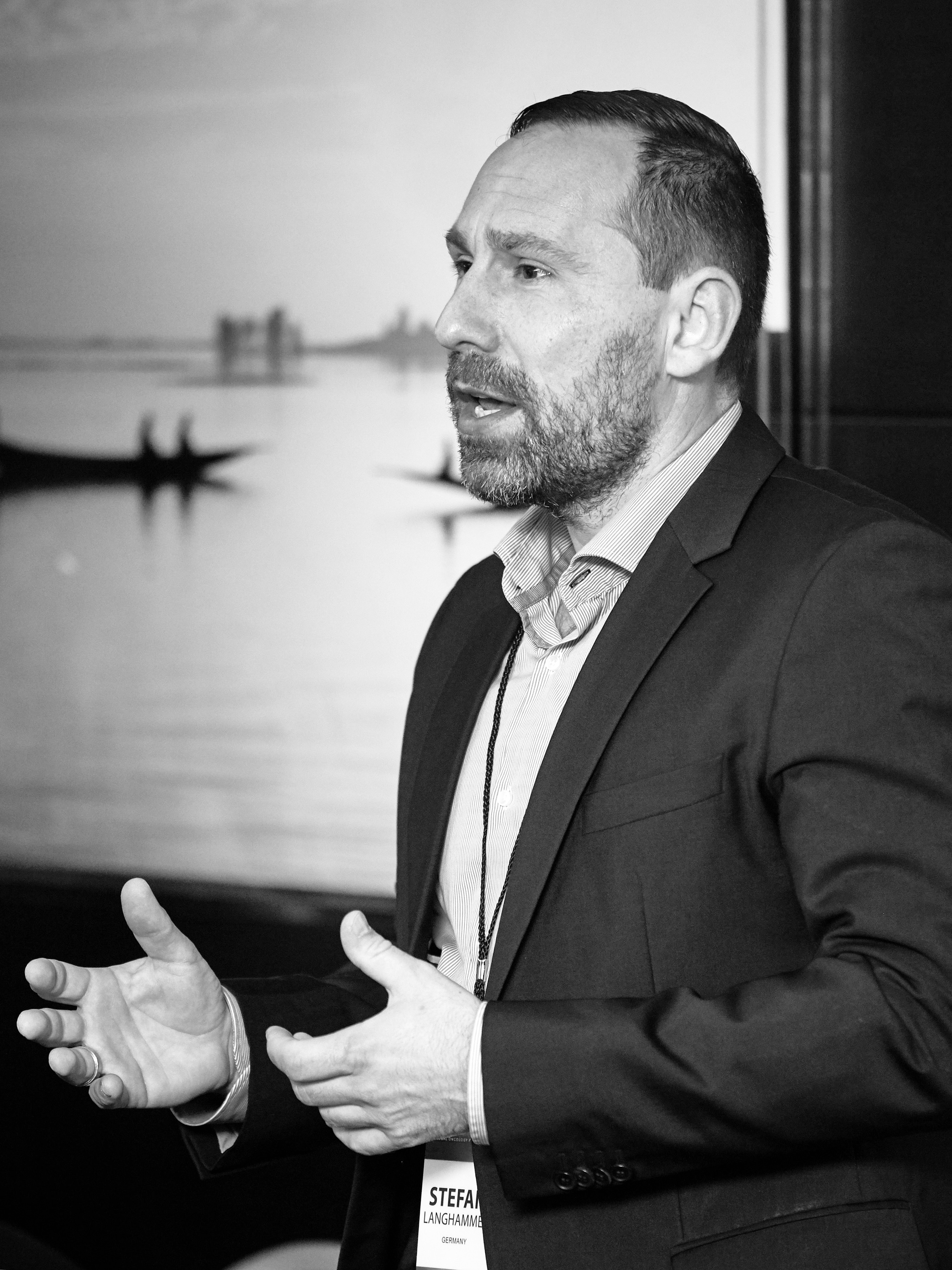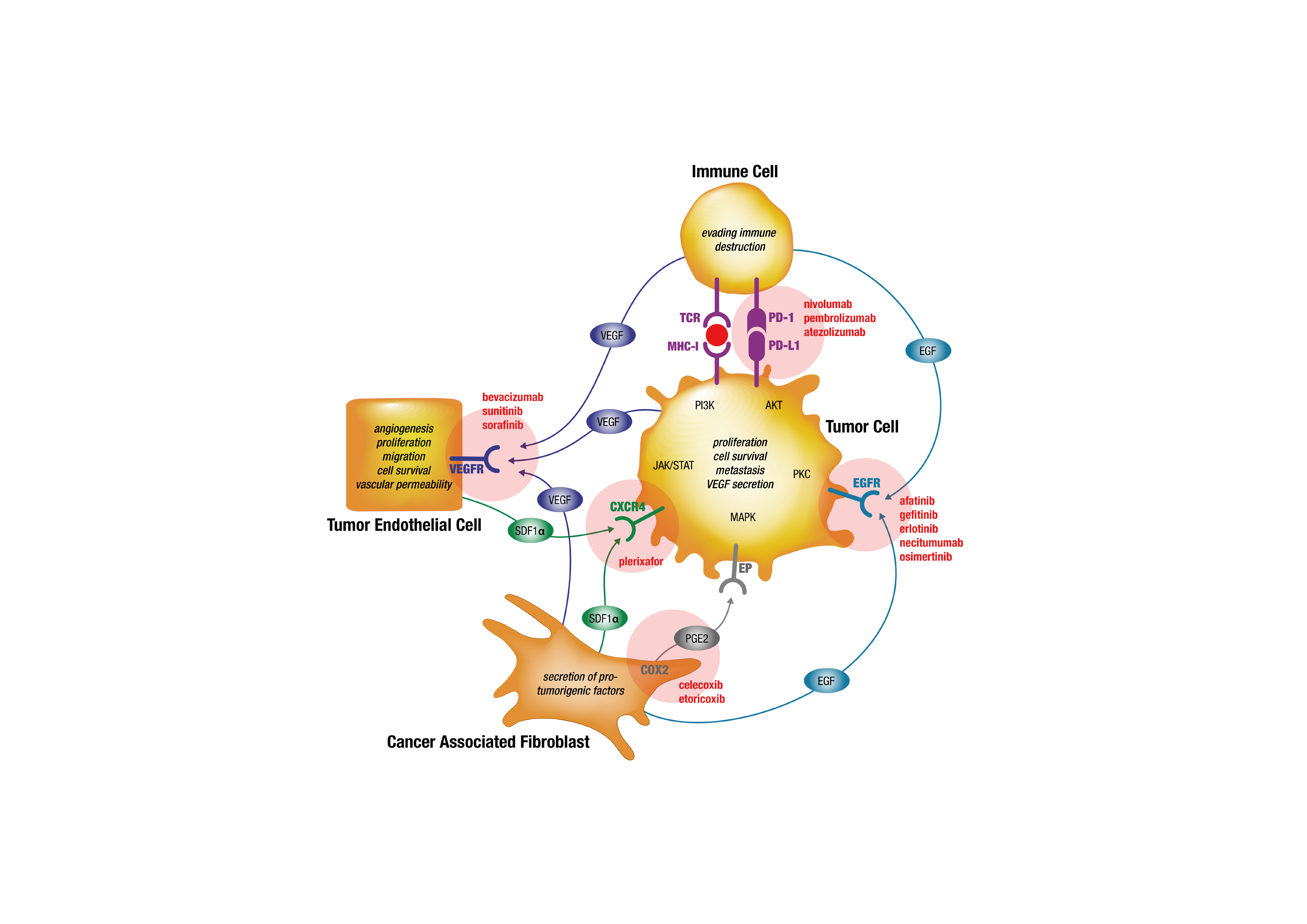About our project
The problem we solve: The pharmaceutical development of cancer drugs is focused on targeting tumor cells itself and largely underestimates the "big picture" of the tumor as a cellular organ consisting of different reprogrammed cell types (Hanahan and Weinberg, Cell, 2011) mediating interdependent intercellular resistances to monotherapies.
About our solution:
This experiment aims to proof the superiority of a combination therapy for late stage lung cancer treatment by breaking the crosstalk of this cellular tumorigenic network and thus overcoming existing and preventing adaptive resistances to targeted therapies (Langhammer and Scheerer, Oncotarget, 2017). The applied drug combinations are selected by expression profiles of their respective targets (such as VEGF-A, CXCR4, COX2, EGFR) in patient-derived xenograft tumors.
Progress to
date:This project is in the planning stage and a detailed description of the underlying hypothesis can be found at Langhammer and Scheerer, Oncotarget, 2017.
As a first step on the way to a clinical trial, this experiment will focus on evaluating a new and first time applied biomarker-selected combination treatment with FDA approved drugs for adenocarcinoma non-small cell lung cancer (NSCLC) without identified driver mutations in mouse PDX models. The results of this experiment will be published in an international peer-reviewed open access journal and will be rapidly employed for seeking support for the application of a clinical trial in selected NSCLC patient populations.
Project Timeline
12/2018: Detailed planning of experimental study protocol (PDX expression profiles, study arms, drugs, dosing, dosing schedule) with an expert team to be identified.
01/2019: Execution of the mouse PDX models at the research company facilities in Berlin, Germany.
03/2019: Statistical analysis of data, evaluation of results, possibly additional in vitro experiments for expression profile analysis in obtained tumors and preparation of publication.
05/2019: Publication of results in an international peer-reviewed open access journal
About Our Team

Creator: Stefan Langhammer
Location: Niedersachsen
Bio: For more than 15 years I am working the field of biomedical research and medical affairs in different indications for academic institutions and pharmaceutical companies. During that time I have learned that biological processes underlying different diseases are very similar in the way they interact with the physiological system. For example this is true for poxviruses when they use the same cell surface receptor for cellular spreading also responsible for initiating and maintaining tumor growth in some cancer patients, which is the epidermal growth factor receptor (EGFR). There are many more examples of this kind in virology, immunology and oncology.
One detail in all of these interdependent interactions of "the good" and "the evil" is the fact that those diseases that are hardly curable seem to have the broadest repertoire of armory in terms of biological mechanisms. For those, only the combined inhibition of different targets lead to a significant improvement in favor of "the good". Such an example is the Human Immunodeficiency Virus (HIV) where the lack of a transcriptase proof-reading mechanism makes it impossible to design an effective vaccine or to generate a drug capable of clearing the virus from the body. However, quite a while after its discovery in the early 1980ies it became clear that only a combination therapy is able to provide a significant survival improvement for HIV infected patients.
Taken together I am convinced that in many late stage cancer indications where patients do not have any more treatment options only an intelligent and biomarker-selected combination of targeted therapies will lead to an improvement.
Today, I am employed at a pharmaceutical company and on the side I am still trying to fight cancer in a not for profit way by publishing and discussing hypotheses from my research and experiences at life-science-consulting.net.
Title: scientist
About Our Company
Location: Hirschweg
Hannover, NI 30938
DE
Founded: 2014
Website: http://www.life-science-consulting.net
Product
Stage: Idea
YTD Sales: Working on it
Employees: 1-2
Innovation Details
Intellectual Property Summary
There is nothing to be protected by this project. This project is in general public interest and aims at the fast initiation of a clinical trial in order to allow cancer patients a rapid potential benefit of the outcome.
Clinical Information
A detailed description of the underlying research hypothesis and clinical evidences can be found at Langhammer and Scheerer, Oncotarget, 2017. All drugs that will be employed for selecting the biomerker-selected combination therapy are FDA approved in different inidcations, such as plerixafor (targeting CXCR4), celecoxib (targeting COX2), bevacizumab (targeting VEGF-A) and erlotinib (targeting EGFR). The approval status of the selected drugs will leverage the possibility to be readily used in a clinical trial and potentially by physicians in an off-label approach.
Regulatory Status
This project aims to provide the pre-clinical rationale for the initiation of a clinical trail that will be suitable for achieving a FDA clearance for the indicated combination therapy in a biomarker-selected patient population in late stage lung cancer.
How we will use the funds raised
Budget plan:
$16,000: Carrying Out 10 Mouse PDX Models
$4,000: Drug supply costs
$1500: Statistical Analysis
$3000: Open Access Publication Costs
Budget description
10 mouse patient-derived xenograft (PDX) models of Non-Small Cell Lung Cancer (NSCLC) will be carried out at a research company in Berlin Buch, Germany. Costs of this budget item include set up, maintaining, treatment and evaluation of the experiment. Drug supply costs will allow to order indicated drugs from research providers such as "Sellick Chemicals" for low research only prices. Statistical Analysis has to performed in order to calculate the necessary power, to adjust the experimental setting and to analyze the study outcome data. Publication costs are needed in order to publish the obtained results in an international peer-reviewed open access journal in order to support the fast set up of a respective clinical trial.
Thank You
For more than 15 years I am working the field of biomedical research and medical affairs in different indications for academic institutions and pharmaceutical companies. During that time I have learned that biological processes underlying different diseases are very similar in the way they interact with the physiological system. For example this is true for poxviruses when they use the same cell surface receptor for cellular spreading also responsible for initiating and maintaining tumor growth in some cancer patients, which is the epidermal growth factor receptor (EGFR). There are many more examples of this kind in virology, immunology and oncology.
One detail in all of these interdependent interactions of "the good" and "the evil" is the fact that those diseases that are hardly curable seem to have the broadest repertoire of armory in terms of biological mechanisms. For those, only the combined inhibition of different targets lead to a significant improvement in favor of "the good". Such an example is the Human Immunodeficiency Virus (HIV) where the lack of a transcriptase proof-reading mechanism makes it impossible to design an effective vaccine or to generate a drug capable of clearing the virus from the body. However, quite a while after its discovery in the early 1980ies it became clear that only a combination therapy is able to provide a significant survival improvement for HIV infected patients.
Taken together I am convinced that in many late stage cancer indications where patients do not have any more treatment options only an intelligent and biomarker-selected combination of targeted therapies will lead to a significant improvement.
Comments
Login to post your comment!
Click here to Login




